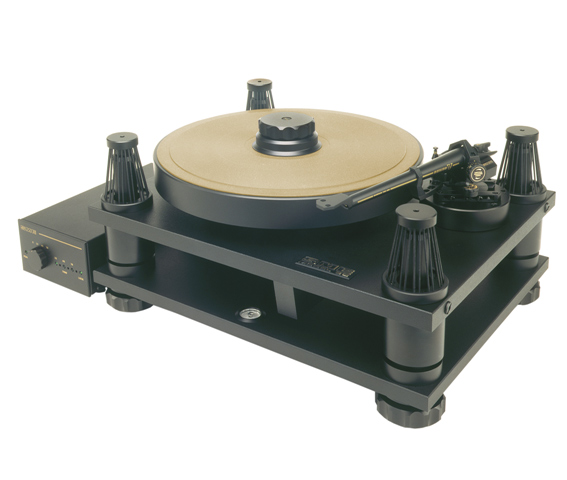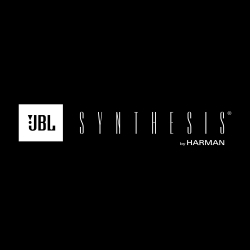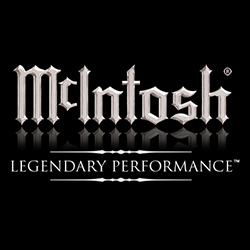THIRTY SOMETHING
Analogue’s swan song? SME unleashes its first turntable
by Ken Kessler
Fastidious. Single-minded. Self-sufficient. The man was a renaissance figure, one who would never suffer fools. He believed that form followed function, that workmanship was as important as performance. His products were (often) the finest money could buy. He was slightly anachronistic. His company was run like a feudal estate. He was the entire management and board of directors. I’m talking about Ettore Bugatti, the man who once allegedly said to a customer who complained about his car’s poor cold starting, ‘If you can afford a Bugatti, you can afford a heated garage.’
When the French electricity board gave him a hard time, he told them to get stuffed and built his own generator. He also managed to build what many regard as the most balanced automotive design of all time – the Type 35B. And nobody can dispute that it was the most successful racing car of all time. What’s that got to do with hi-fi? Sadly, not a lot. Men like Ettore Bugatti are a bit thin on the ground in these days of public companies, leverages, safety regs and high interest rates. But much of the above description applies to SME’s Alastair Robertson-Aikman, the closest that hi-fi has ever come to producing its own Ettore Bugatti.
The above isn’t just some twee literary device. I make the analogy to explain how and why a sane, intelligent man with three decades in this business can dare to launch a £9000 turntable in 1990. CD has kicked the (commercial) stuffing out of the LP, as anyone who has looked beyond the confines of the high end community will realise. The record shops have all but abandoned vinyl. CD has surpassed the LP in both value and unit sales, and it looks more and more like the LP won’t make it past 1992…let alone 1995.
So who is capable of launching from scratch a new turntable this late in the game? Besides companies that already have a history for producing LP spinners, few would be brave enough to start afresh. Indeed, I would seriously advise any manufacturer not already making turntables to seek psychiatric and financial advice if they have a mind to enter the game. But SME is not your ‘normal’ hi-fi company, and AR-A (as he’s referred to in the fiefdom of Steyning) isn’t your average guv’nor.
SME is, as far as tooling and machining and mechanical matters are concerned, entirely self-sufficient. Aside from raw materials, wire and a few tasks like magnesium casting, everything you find inside a box labelled SME was made in-house, right down to the plastic handles on the screwdrivers. Because of this, the company can produce just about any machine-made product which strikes its or AR-A’s fancy. Indeed, I pray still that AR-A will one day return the company to its roots, the manufacturing of fine scale models. (SME once made a fine Bugatti…)
AR-A – despite years of ignoring the pleas of friends and customers – finally decided that there should be a turntable sporting an SME badge. Had any other company chosen to enter turntable manufacture from cold, it’s likely that it would have had to source plinths, platters, motors, mats, spindles, bearings or whatever. AR-A merely calls in members of his crack team, tells them his plan, and hey, presto! fourteen weeks later, there’s a prototype which looks like something off of an up-and-running production line.
Think about it: three-and-a-half months to go from idea to reality, and the first example is finished to perfection. Given the same project, your average hi-fi giant would require 14 weeks just for the memo to travel from head office to factory, while most other companies would have needed to same amount of time just to convince the bank manager that a few quid on the overdraft wouldn’t go amiss.
So, the mere fact that the SME Series 30 – named to mark three decades since the first tonearm – appeared at all is noteworthy. That it appeared so quickly is remarkable. That the first-ever is built to shop-ready standards is merely inconceivable. I cannot think of one other company which could duplicate that
performance. (I know, Linn and Michell, too, have awesome engineering capabilities, but they’ve been making turntables for decades.)
Okay, so SME deserves to enter the record books just for the basic achievement. But what does the SME turntable do for the ailing LP? And will vinyl fanciers stump up the necessary £9k?
AR-A is the least naive individual I’ve ever met. He knows full well that the food which you feed a turntable is in dwindling supply, the steak we call LPs being replaced by the mystery-meat we know as CD. But AR-A also knows that the only people who would even consider the SME Series 30 are those who 1) have the
wherewithal to purchase such a costly device, 2) have enough respect for the LP to deem it a primary source even into the digital era and 3) have record libraries which warrant the purchase of a new turntable and the cosseting it can provide.
[Note: It has come to my attention that some would argue with Kessler’s Only Dictum: the KOD states that anyone whose hi-fi costs more than his or her software library is a hi-fi nut, not a music lover, and is therefore of a lower order. Remember, hi-fi is the means to an end, not an end in itself. Anyway, I would call for the public hanging of anyone who buys an SME 30, a Goldmund, a Basis, a Versa or any other state-of-the-art spinner when they have only 10 LPs. On the other hand, I realise that, at even £7 per LP, a customer would have to own only 1285 to justify the purchase of the SME. But that doesn’t account for the rest of the system…]
So SME has risen to the challenge of creating the final turntable by producing a deck which blends the traditional – belt-drive, full suspension – with the radical. It appears that SME chose to create a deck which can remain wholly independent of the environment in which it resides. In the best SME manner, it is designed to be fool-proof, so there is no penalty despite the complexity of the suspension.
It’s a four-pointer, the argument running along the same lines as those for the design of the Basis (see HFN/RR, March 1990). As with the Basis, high mass is used in conjunction with a fluid-damped support system to create a suspension which offers both isolation and damping, but SME has opted for what AR-A regards as a zero-Q tuning. Unlike any other suspended turntable where the sub-chassis flops up and down to the tune of 2-3Hz, the Series 30 operates in slo-mo. Press down on the assembly and it returns to normal height with a slow and graceful ascent.
You get the impression that any unwanted vibrations routed away from the LP find their way out of the main plate and into the hydraulic fluid. I found that – on an HFN/RR Newsstand, a concrete floor or a Partington-made equipment rack – the Series 30 acted as if in an isolation chamber. It was absolutely unshakeable, easily passing the old kick-the-tyres test of lowering the stylus onto a stationary LP, turning up the wick and giving it a thump. What was heard through the speakers was barely detectable.
The ‘springy’ bit of the suspension consists of an array of 10 precision-made rubber bands on top of each of the four pillars. Allied with the fluid suspension, the combination produces a player which is immune to upset. Lest you think that this hybrid creates a nightmare for the installer, note that the transition from the packed, in-transit lock-up mode to the correctly-adjusted, free-floating state takes mere minutes. A clever arrangement of locking screws marries the upper section to the base plate, at the same time sealing the fluid chambers. Release the screws and you’re floating again.
As for adjustments, the sheer weight of the assembly makes it self-levelling, while the correct ride height is achieved by turning screws in the tops of the pillars to create a gap between the upper and lower sections of the pillars. Naturally, SME supplies the necessary jig, a strip of metal which you insert in the gap.
The main chassis, though, should be levelled first, using a built-in spirit level in conjunction with height-adjustable feet reminiscent of Micro-Seiki’s Microsorbers. Place the belt over the pulley and sub-platter, add the main platter (after freeing the sub-platter which locks with three nylon screws), place an LP and the screw-down puck on the spindle and carry out the adjustments as outlined above. It actually takes longer to explain it that to do.
All that’s left is to connect the outboard power supply to the motor via its DIN-type plug, the motor mounted on the main chassis as per the Basis. The motor and the power supply are the only parts of the ’30 sourced from outside of SME but they’re modified and fine-tuned at Steyning to SME spec. That’s it.
Naturally, an arm must be fitted, but it’s likely that most will come from the factory with an SME Series V in place. It can be ordered without arm for those who already own an SME arm; I would not want to bear witness to a request for a Series 30 sporting any other company’s arm-mounting hole. Should high-end turntables survive beyond, let’s say, the next Grand Prix season, I’ve no doubt that some aftermarket wizards will produce unauthorised adaptor kits for Air Tangents, Ittoks and the like.
Ergonomically, the SME will present no surprises to those accustomed to players with ‘mandatory’ clamps. SME’s is a two-sectioned puck which screws down onto the disc, as per the Oracle’s and the Basis’ clamps, mating the LP to the mat-less platter. Close examination of the platter’s surface reveals that it bears an etched finish, almost like an LP’s groove, which catches micro-grit, preventing it from being ground into the underside of the LP. Additionally, this sculpting minimises static.
I heard the SME in A-RA’s legendary listening room before spending an intense five days with the lone example in my own ‘studio’. Cartridges tried with the ’30 included the Lyra and the Koetsu Urushi, side-by-side comparisons with the Basis being easy because my sample was fitted with a SME V and I had a spare Lyra. To allow for cartridge-to-cartridge variations, the transducers were swapped again and again.
The rest of the review system consisted of my well-worn Audio-Research SP-14 pre-amp, the Aragon power amps and DAX’ed Apogee Divas. I list the equipment because my findings differed considerably from another reviewer’s, the esteemed Martin Colloms, and we both acknowledged that the experience suggests that systems-matching a turntable to the rest of your hardware may include a lot more that the fitting of the ‘right’ arm and cartridge. He also used an SME V and an Urushi – and I don’t think that two Urushis could sound that wildly different – so I caution readers to examine our findings closely, and to factor in the differences in the rest of the review systems.
My next remarks are not meant as an aside, but to help understand both the other reviewer’s and my responses to the SME Series 30 and to help explain how two reviewers can have such differing reactions. Leaving aside those political reviewers who, for example would give a Naim or Linn product a good review even before the box was opened, the other reviewer and I find ourselves too often in agreement to worry about clashes in print which could confuse the readers – or our Editor.
What’s so fascinating about this is that we have different approaches, preferences, priorities and tastes, as well as dissimilar reference systems. And we don’t listen to the same types of music, either. Although we tried to avoid collaborating too closely on this review, at least until we’d formed our own independent opinions, we were concerned enough about our differences to compare notes. Before launching into these differences, I’ll try to recall the characteristics of the SME on which we concurred.
Although we differ slightly into what aspects of bass reproduction should take precedence, it was agreed that the SME exhibited superlative bass control; I would go so far as to say unmatched. I do not, as regular readers may recall, have any great love for over-damped bass; the Series 30 takes it right to the limits without stepping over the edge.
To best experience the ’30’s capabilities in this area, I listened mainly to acoustic bass; had it failed, the SME would have made an well-thumped upright sound like a Stanley Clarke’d Fender. It didn’t fail, and the acoustic bass was deep and rich, but without any flab.
Another area on which we more or less agreed is that of precision. And it’s here that taste may be as important as objectivity, because over-etching, hyper detail and other manifestations of minutiae can be determined as ‘realism’ or ‘hi-fi’ depending on your viewpoint. Whatever, the SME produces clearly defined images which do not wander, a sound stage with three-dimensional boundaries and well-defined internal locations, and a wealth of low level detail which is somehow diminished in lesser systems.
Now we part company, because my priorities differ from his in the are of ‘rhythm’ and ‘pace’. I fail to comprehend, however much I rub my Mensa card, how a turntable can bugger about with the ‘time’ aspects of a musical event if the speed is spot-on at 33 1/3 under all conditions – which I believe the SME’s rotation to be. It’s one of those subjective mysteries, like Linn’s infamous ‘tune-playing’ propaganda, or how you can’t even tell what song it is if it’s played via CD or whatever. You play for me a Sam & Dave track on a cylinder, over the telephone, or via a paper cup and a piece of string, and I tell you the name, the composer and the goddamned matrix number.
I prefer to restrict my observations to far more empirical artefacts, like spatial recreation, tonal aberrations or accuracy, the retrieval of detail, bass extension and so on. Whatever criticisms I’ve heard about the way the SME handles rhythm and pace, I’ve had no problem gettin’ down with whatever slab of funk I chose to audition.
What I cannot call ‘state of the art’ are the SME’s bass extension nor its way with crowded passages up to and including the upper bass/lower mid region. In both of these areas, I preferred the Basis, despite assurances from SME that the Series 30 was cleaner throughout the bottom octaves. Maybe so, but the bass and lower-mid from the Basis were more convincing, adding greater weight and impact, with the price being the SME’s superior control.
Unlike Martin, I found that SME to possess superb dynamic capabilities, my feelings being that the ’30 has few if any rivals in this department. Confused? Mazel tov.
Whether listening to solo acoustic guitar, a cappella or a mass of synths, I detected near-perfect handling of musical details recorded concurrently at a wide range of levels. Subtle details were never swamped, transitions from soft to loud and back were always smooth and consistent. Even when playing LPs with restricted dynamic range, e.g. heavy metal recordings where the meters barely flicker, the SME was able to balance the loud with the soft. The sheer lack of compression imparted a sense of the real which means the difference between great hi-fi and the merely adequate.
Where the SME shined brightest was in the mid-band through to the lower treble, handling voice exactly as you’d expect of a player designed by an opera fanatic. My nastiest test, the sibilance-heavy ‘Keep On Tryin” by Poco, sounded about as good as it’s gonna get. I mentioned before the way with spatial concerns, so the five vocalists and the lone acoustic guitar enjoyed clearly defined spaces; the removal of much of the spittiness on ‘t’s and ‘s’s came as blessed relief. (Why is it that the best pop performances are rarely well-recorded, while the most tedious enjoy studio treatment beyond compare?)
The comprehensive retrieval of details meant that such suggestions of reality as the sounds of breathing and clothes a’rustlin’ were there for all to hear. Again, you may judge the presence of such details as ‘hyper-reality’, but I dare you to defend a system with even ‘beneficial’ losses; I know, having defended the euphonic over the accurate and taken much stick for it. Whatever, the SME leaves little to the imagination, which is what every hi-fi product should do. After all, we’re listening to a complete aural experience; you shouldn’t have to fill in any missing sounds.
For all of this, the SME is a bit cold, maybe even ‘formal’. It’s a turntable to admire rather than adore, a Porsche instead of a Ferrari. That’s not to say it isn’t musical, but the difference is the same as that between a precision German marching band and a bunch of New Orleans street-players playing some John Handy. The former will play it note-perfectly, the latter will make it swing. But should a piece of playback equipment have a contributory role?
My mind says ‘No’. The musicians did the work when they laid down the tracks. So this makes me respect the SME in a way I respect few other components. Then again, ‘respect’ and ‘love’ ain’t the same thing. Still, the SME Series 30 is a genuine tour de force, a wonderful way to support the LP through its dotage.
[Note: As of 2014, I still use an SME 30 turntable with Series V arm.]
For further information, please visit: www.sme.ltd.uk























